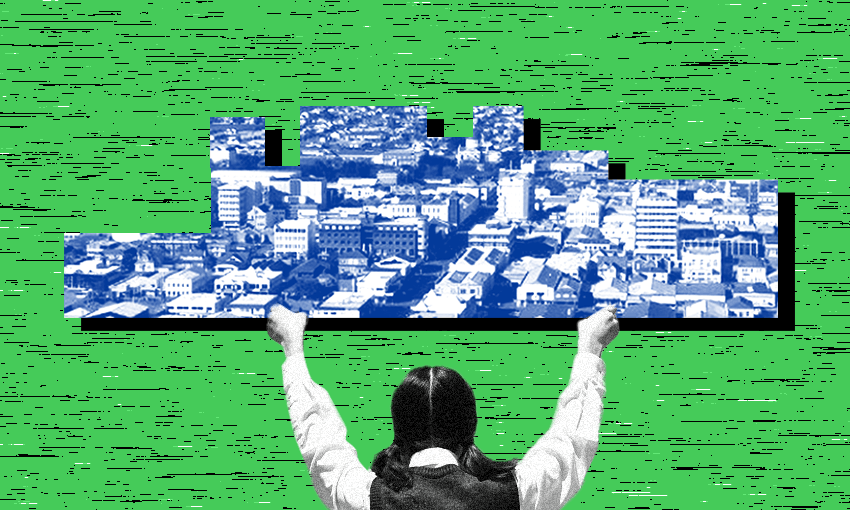Russell Brown meets three of the catalysts behind an ambitious initiative in the deep south, and learns how the challenges of 2022 have forced change, adaptation and growth.
A year ago, Te Rourou, One Aotearoa Foundation, was poised on the edge of an unusual experiment. The Invercargill Initiative, a bid to make a difference in one place, had its ground laid, its funding in place. The initiative had aimed to address youth exclusion and disadvantage in the southern city as a first step towards a longer-term vision of halving youth disadvantage nationally. But what would it actually do?
At inception, there was a degree of uncertainty even on the side of the organisers – although, as The Spinoff learned at the time, that was the point of the experiment. The idea, rather than to set a strict and prescriptive roadmap, was that the initiative would let the community – and in particular, its young people – decide what was important.
The Invercargill Initiative emerged from research undertaken by the foundation – research which has led its strategy through to 2027 and which also informed the launch of its OHI Data Navigator project. The research showed that 23% of Invercargill youth had experienced exclusion and disadvantage, compared to a national average of 20%. For some areas of the city, the rate is much higher. The research, among other factors, including focus from One NZ in the region, and the foundation’s work with Ngāi Tahu, were some deciding factors for the place-based initiative.
Mandy Smith, an Invercargill local, came aboard the initiative in April last year, as the first of two “community catalysts” employed to forge connections between groups that might not have had a common focus before. Initial community consultation identified the need for such roles, and now the two in these roles act as a resource for the community, building connections, collaboration, and capability in the youth sector.
On top of that, the team has been working with young people, which has involved much more than just listening to them, she says.
“We know from our experience in the community and the kōrero we’ve had with our rangatahi that the disadvantage and exclusion they’re experiencing is creating constant barriers for them to thrive. Whether it’s related to finance, education, wellbeing, or social connections, our young people’s lives are constantly being impacted by things outside of their control. Our rangatahi are very aware of what needs to change for them and so it is vital that we work alongside them to enable the change they want to see.”
Through this work, Smith and her team have discovered that young people don’t feel like their voices are being heard in Murihiku. The Te Ōhanga Tīwera fund (“ōhanga” meaning a nest; “tīwhera” signalling it is open to all) is helping to change that – by giving funding power to the rangatahi themselves. It’s the foundation’s innovative way of demonstrating that youth voices are not only being heard, but being turned into actions – and those actions benefit the region in more ways than one.
The first work of the initiative was to establish and upskill a panel of eight young Māori to hear applications and decide where the support should go.
“We had this group nominated by their rūnaka,” says Smith. “And we took them through a few months of working together, learning about community wellbeing funding models, conflicts of interest, all those sorts of governance and funding skills. Now they’re deciding what happens with all of that money.”
To date, the panel has allocated over $250,000 in two rounds of the fund, supporting Southland programmes which help to connect rangatahi Māori to their culture. An awards night has followed each round, during which oversized cheques were handed to successful applicants.
“It’s been amazing, because we had 14 to 18 year-olds in there, so really quite young,” says Smith. “Seeing them really taking control and learning has been great.”
Stacy Hughes joined Te Rourou’s work as a community catalyst midway through last year, and describes his role as “a meddler in the middle,” a “conveyer of conversation.” Stacy, also an Invercargill local, uses his background in the youth sector to better understand how funders can do better for the communities they want to serve.
When it comes to the struggles of Invercargill’s young people, many of them point towards the geographical isolation and a need to get out of their hometown to have better opportunities. Hughes and Te Rourou are working to create scalable change within the region so leaving isn’t the only perceived option for these rangatahi to succeed.
Hughes points to the unique approach of Te Rourou, relying on community leaders and the connections that have already been forged to inform their work. “It’s very easy for people in large cities like Auckland and Wellington to point at another region and try to replicate the same approach to community uplift, but the ‘community catalysts’ understand that Invercargill has its own mana and therefore needs a unique approach. Te Rourou believes there isn’t a one-size-fits-all to tackling youth disadvantage and exclusion in Aotearoa.”
Sharon Reece, a developmental evaluator for Te Rourou, has two teenagers of her own so isn’t shocked by the capability of the rangatahi she sees in her day-to-day. “I think many people will be surprised by how well rangatahi can communicate their own experiences and their future aspirations,” she says.
“We’re so much more than a source of funding. The work done by our local team of three is about bringing together a network to drive real community change, and we value the relationships we build above all else.”
There is a clear benefit, Smith says, in making Invercargill a place where young people want to stay, rather than leave. This feeds into work the city council is doing.
“We’ve got an ageing local population and we’re seeing quite a disconnect between who’s running businesses and who’s at that management level, and then the young people coming in. Not knowing how to work together is a huge problem. Those businesses need young people to come through.
“The council is pushing on a strategy of: how do we retain young people in the city? How do we build vibrancy? It aligns with the work we’re doing quite nicely.”
The work that’s being done in the Invercargill Initiative to ensure young people’s voices are heard, and they have a seat at the table in their communities, will hopefully result in more young people feeling a sense of belonging in Invercargill and therefore staying in the region beyond their teens. Empowering young people to have a say on how their city reflects their own needs and experiences will give them a new sense of pride and ownership over their communities.
When Smith looks towards the future of the initiative, she sees sustainable growth and evolution. “Our roles were created from community engagement. It has always been about what the community wants and needs, and as those needs change, so will our initiative. It’s up to us to continuously learn, reflect, and adapt the mahi according to the voice of our community. The long-term goal of the place-based initiative is really to learn, trial and innovate not just in the community, but alongside it.”

